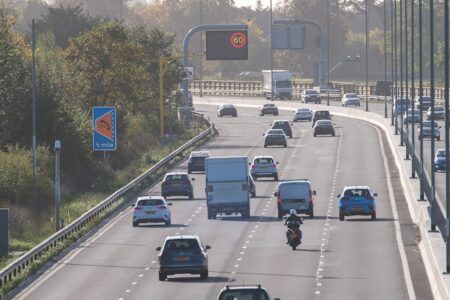International automotive technology company Continental is developing a new ‘connected car’ system that classifies the potential tire/road traction of an upcoming section of tarmac for the vehicle’s advanced driver assistance systems (ADAS), and shares it through the cloud, providing information that will be invaluable for future autonomous driving.
Continental’s new Road Condition Observer uses sensors that are already installed in the vehicle as standard to classify the road surface ahead as dry, wet, covered with snow or icy. A specially developed algorithm detects the typical features of the four different types of road conditions, allowing the driver and ADAS to react suitably and in good time to any adverse situations ahead. The automotive industry has been researching for years methods for detecting the available friction coefficient (traction or grip) between tires and the road surface in a proactive way, and to use this information to make their vehicles safer. All earlier attempts in this field failed, due to inadequate sensors and computing capacity that was either lacking or too expensive.
After intensive development work, Continental has managed to create a system that recognizes the road conditions ahead and classifies them as dry, wet, snow-covered or icy. The system uses the vehicle dynamics sensors in the Electronic Stability Control (ESC) feature that is available in nearly every car as standard equipment, together with a mono camera. The RCO classifies the road condition on the basis of: the evaluation of camera images of the surroundings in front of the car; comparison with data from the ESC; knowledge of local and regional weather conditions, such as external temperature, wiper activity, and cloud data; and current tire behavior.
In the course of further development, the information of the RCO will flow into a comprehensive 360° environmental model that is prerequisite for a comprehensive understanding of the overall driving scenario. The model is generated through the fusion of different information sources, including: the road geometry, localization and traffic regulation recognition, model-based tracking of moving objects, as the identification of available free space. The RCO could also share this information with other vehicles, roadside infrastructure or road agencies.
“We use sensors already available in the vehicle for the Road Condition Observer to gain information on the grip of the road surface,” said Bernd Hartmann, head of the enhanced ADAS and tire interactions project group within Continental’s advanced engineering department.
“This knowledge allows us to adjust the functions of advanced driver assistance systems to the actual road conditions. To prevent an impending collision, automatic emergency braking for example must be initiated considerably earlier on a wet road than on a dry one. Automated driving also requires us to make judging the condition of the road technically possible for the system.
“An automated vehicle, in particular, must know if it is icy, so that it can drive safely around the next corner. Where possible such a system should be implemented with the existing sensors. This creates a comprehensive data basis for safe automated driving in every type of weather.”




